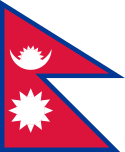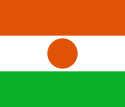ISO 4217
ISO 4217 – międzynarodowy standard zawierający trzyliterowe kody oraz nazwy walut, przyjęty przez Międzynarodową Organizację Normalizacyjną (ISO).
Pierwsze dwie litery kodu to dwuliterowy kod ISO 3166-1 alfa-2, trzecia to zazwyczaj pierwsza litera nazwy własnej waluty. Stosowanie kodów ISO 4217 likwiduje problemy spowodowane używaniem przez różne kraje nazw takich jak dolar, frank czy funt na określenie narodowej waluty.
Standard określa również podział głównej jednostki walutowej. Zazwyczaj dzieli się ona na 100 mniejszych jednostek (np. 1 złoty = 100 groszy), ale spotykany jest również podział w stosunku 1/10 czy 1/1000. Niektóre kraje nie używają podziału dziesiętnego, istnieją też waluty niedzielące się na mniejsze jednostki.
ISO 4217 obejmuje też kody metali szlachetnych (np. złoto – XAU, srebro – XAG czy platyna – XPT) mierzonych w uncjach trojańskich oraz pewnych innych jednostek używanych na międzynarodowych rynkach finansowych (np. specjalne prawa ciągnienia – XDR). Istnieją również specjalne kody dla celów testowych (XTS) i oznaczające brak waluty (XXX). Wszelkie kody specjalne rozpoczynają się literą X. Również kody ponadnarodowych walut (takich jak np. dolar wschodniokaraibski – XCD) zazwyczaj rozpoczynają się literą X, wyjątkiem jest euro oznaczone kodem EUR, mimo że EU nie jest kodem państwa według standardu ISO 3166-1.
Kody w użyciu
Oficjalna lista kodów używanych obecnie, zawartych w ISO 4217.
Zobacz też
- Lista kodów ISO 4217 (ang.)
Przypisy
- ↑ Liczba cyfr po separatorze dziesiętnym.
- ↑ Renminbi Services (ang.). s. HSBC. [dostęp 2018-02-14].
- ↑ a b Unidad de valor real (UVR) – Banco de la República de Colombia (hiszp.). s. Narodowy Bank Kolumbii. [dostęp 2013-11-29].
- ↑ ISO 4217 amendment to the names (ang.).
- ↑ Zgodnie z artykułem 4 protokołu paryskiego z 1994 pozwalającym Autonomii Palestyńskiej na przyjęcie dodatkowej waluty. Na Zachodnim Brzegu Jordanu jest powszechnie używany Dinar jordański natomiast w Strefie Gazy, Funt egipski.
- ↑ a b Waluty Ariary oraz Ugija są podzielone na pięć monet zdawkowych (iraimbilanja oraz chum). Praktycznie nie używane.
- ↑ ISO 4217 AMENDMENT NUMBER 165. [zarchiwizowane z tego adresu (15 grudnia 2017)].
- ↑ a b c ISO 4217 AMENDMENT NUMBER 168 (ang.). sierpnia 2018. [dostęp 2018-08-23].
- ↑ ISO 4217 AMENDMENT NUMBER 164. [zarchiwizowane z tego adresu (5 grudnia 2017)].
- ↑ ISO 4217 AMENDMENT NUMBER 169 (ang.). 17 sierpnia 2018. [dostęp 2018-08-23].
- ↑ Amendment of ISO 4217 (ang.). 17 października 2010. [dostęp 2014-05-16]. [zarchiwizowane z tego adresu (29 lipca 2016)].
- ↑ Amendment of ISO 4217 (ang.). 7 kwietnia 2011. [dostęp 2014-05-14]. [zarchiwizowane z tego adresu (17 maja 2014)].
Linki zewnętrzne
Media użyte na tej stronie
Flag of Albania
The flag of Curaçao is a blue field with a horizontal yellow stripe slightly below the midline and two white, five-pointed stars in the canton. The geometry and colors are according to the description at Flags of the World.
The national flag of Nauru. Official Pantone colours are: PMS 280 blue, PMS 123 yellow.
Autor: Nightstallion (original)
Zscout370 (most recent), Licencja: CC0
Flag of Tuvalu.
The flag of Aruba
The national flag of the Democratic Republic of the Congo. Created according to the 2006 constitution : Son emblème est le drapeau bleu ciel, orné d’une étoile jaune dans le coin supérieur gauche et traversé en biais d’une bande rouge finement encadrée de jaune. (Its symbol is a sky blue flag, decorated with a yellow star in the upper left corner and crossed in the diagonal by a red strip with thin yellow borders) It seems to be identical, except for a lighter field hue, to the 1966–1971 flag.
Flag of Liechtenstein
Łatwo można dodać ramkę naokoło tej grafiki
The flag of the Dominican Republic has a centered white cross that extends to the edges. This emblem is similar to the flag design and shows a bible, a cross of gold and 6 Dominican flags. There are branches of olive and palm around the shield and above on the ribbon is the motto "Dios,Patria!, Libertad" ("God, Country, Freedom") and to amiable freedom. The blue is said to stand for liberty, red for the fire and blood of the independence struggle and the white cross symbolized that God has not forgotten his people. "Republica Dominicana". The Dominican flag was designed by Juan Pablo Duarte, father of the national Independence of Dominican Republic. The first dominican flag was sewn by a young lady named Concepción Bona, who lived across the street of El Baluarte, monument where the patriots gathered to fight for the independence, the night of February 27th, 1844. Concepción Bona was helped by her first cousin María de Jesús Pina.
Flag of Ethiopia
Flaga Finlandii
Autor: Pedro A. Gracia Fajardo, escudo de Manual de Imagen Institucional de la Administración General del Estado, Licencja: CC0
Flaga Hiszpanii
Flag of Portugal, created by Columbano Bordalo Pinheiro (1857-1929), officially adopted by Portuguese government in June 30th 1911 (in use since about November 1910). Color shades matching the RGB values officially reccomended here. (PMS values should be used for direct ink or textile; CMYK for 4-color offset printing on paper; this is an image for screen display, RGB should be used.)
Flag of Gibraltar
Łatwo można dodać ramkę naokoło tej grafiki
The national and official state flag of Haiti; arms obtained from http://www.webchantier.com/. The civil flag can be found at here.
bendera Indonesia
Flag of Israel. Shows a Magen David (“Shield of David”) between two stripes. The Shield of David is a traditional Jewish symbol. The stripes symbolize a Jewish prayer shawl (tallit).
The Flag of India. The colours are saffron, white and green. The navy blue wheel in the center of the flag has a diameter approximately the width of the white band and is called Ashoka's Dharma Chakra, with 24 spokes (after Ashoka, the Great). Each spoke depicts one hour of the day, portraying the prevalence of righteousness all 24 hours of it.
Flag of Jamaica. “The sunshine, the land is green, and the people are strong and bold” is the symbolism of the colours of the flag. GOLD represents the natural wealth and beauty of sunlight; GREEN represents hope and agricultural resources; BLACK represents the strength and creativity of the people. The original symbolism, however, was "Hardships there are, but the land is green, and the sun shineth", where BLACK represented the hardships being faced.
Flag of Laos
Flag of Mauritania, adopted in 2017. The National Assembly added red stripes to the top and bottom edges to represent “the blood shed by the martyrs of independence”.
Flag of Maldives. The colours used are Pantone 186 C for red and Pantone 348 C for green.
Flag of Namibia
Flag of New Zealand. Specification: http://www.mch.govt.nz/nzflag/description.html , quoting New Zealand Gazette, 27 June 1902.
The flag of the Pitcairn Islands, arms courtesy an e-mail from the author of xrmap and the Blue Ensign from Image:Government Ensign of the United Kingdom.svg
Flag of Rwanda. The flag ratio is 2:3 with the stripes being 2:1:1. Colors are the following officially: Pantone 299 C 2X (blue), RAL 6029 (green), RAL 1023 (yellow) and RAL 1003 (golden yellow). (As of 03/08/2010, the only color used is the Pantone 299 C, which is from here. The rest of the colors are RAL shades from here.)
Flag of South Sudan (originally of the Sudan People's Liberation Army/Movement)
Łatwo można dodać ramkę naokoło tej grafiki
The national flag of Kingdom of Thailand since September 2017; there are total of 3 colours:
- Red represents the blood spilt to protect Thailand’s independence and often more simply described as representing the nation.
- White represents the religion of Buddhism, the predominant religion of the nation
- Blue represents the monarchy of the nation, which is recognised as the centre of Thai hearts.
The flag of Navassa Island is simply the United States flag. It does not have a "local" flag or "unofficial" flag; it is an uninhabited island. The version with a profile view was based on Flags of the World and as a fictional design has no status warranting a place on any Wiki. It was made up by a random person with no connection to the island, it has never flown on the island, and it has never received any sort of recognition or validation by any authority. The person quoted on that page has no authority to bestow a flag, "unofficial" or otherwise, on the island.
Made by author of Xramp, first uploaded by Denelson83 as Flag of Ecuador.svg, modifications by Husunqu.
The flag of Guam, courtesy an e-mail from the author of xrmap. Modifications by Denelson83.
Flag of the Turks and Caicos Islands
The proportions of this flag are 3:2; however, there is no official definition for the correct proportions and also 5:3 is widely used.
Flag of Anguilla (adopted on 30 May 1990) - RGB colours, 1:2 dimensions and construction details based partly on the templates: Flag of Anguilla – A Brief History
Autor: See File history below for details., Licencja: CC0
The Flag of Dominica.
Please do not replace the simplified code by a version created with Inkscape or another vector graphics editor❗
Flag of Senegal
Flag of the Ivory Coast, written by Jon Harald Søby, modified by Zscout370. The colors match to what is reported at http://fotw.vexillum.com/flags/ci.html.
Flag of São Tomé and Príncipe
Flago de la Kokosinsuloj, uzo ne oficiala
Flag of Ascension Island
Flag of the en:French Southern and Antarctic Lands, official since 23 February 2007











































































































































































































































